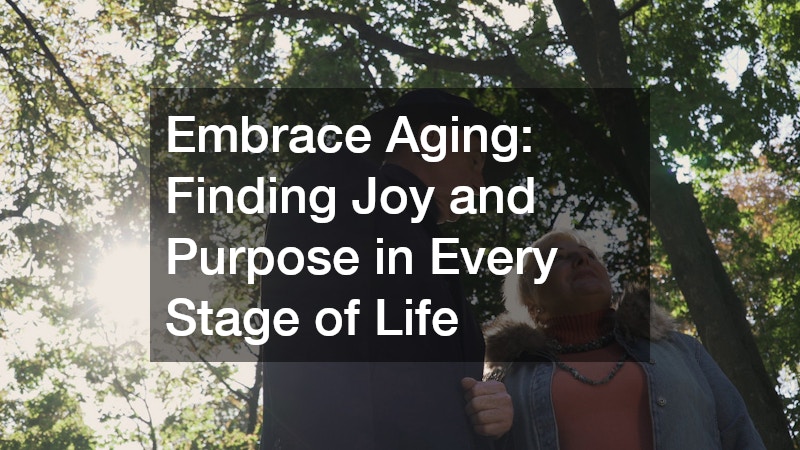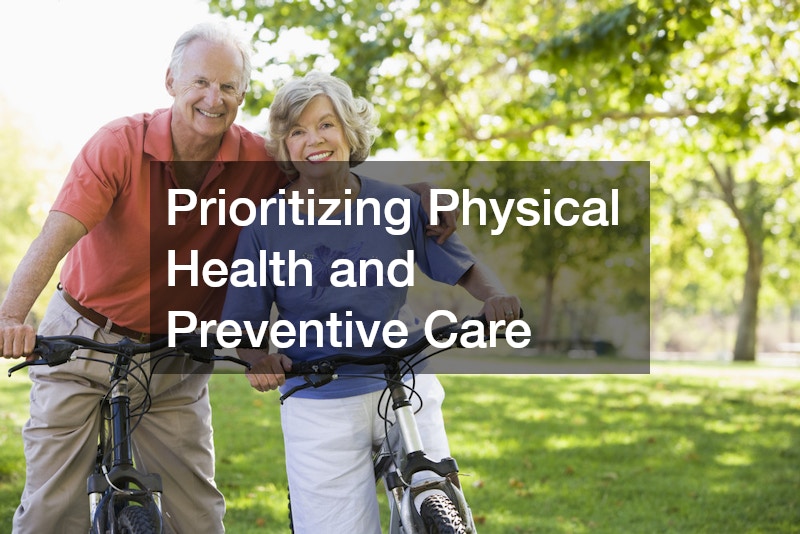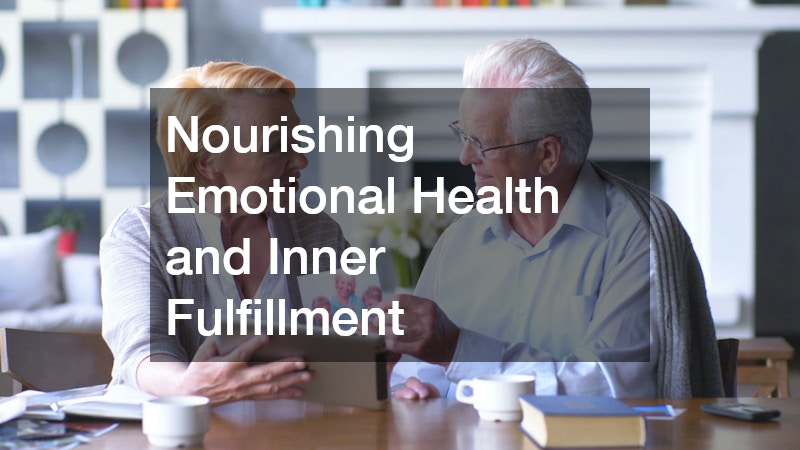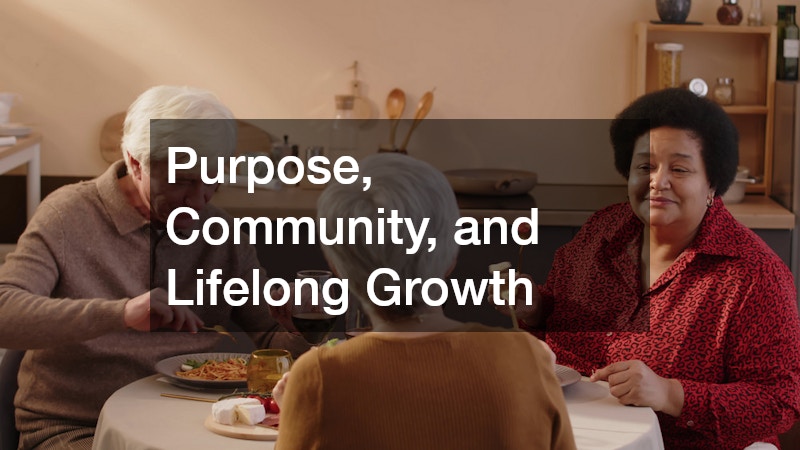Aging is an inevitable part of life, yet it often carries unnecessary fear and stigma. Society tends to glorify youth, equating beauty and vitality with worth, while dismissing the natural process of growing older as something to resist. However, learning to embrace aging means choosing to see the beauty in transformation, the wisdom that comes with experience, and the opportunities for deeper purpose at every stage of life. It is about shifting the perspective from loss to growth—from counting wrinkles to counting blessings. By nurturing the body, mind, and spirit holistically, people can thrive well into their later years with joy, energy, and fulfillment.
Redefining the Perception of Aging
For generations, aging has been portrayed as something to dread—a decline in appearance, ability, and independence. But in recent years, there has been a cultural shift toward celebrating longevity, vitality, and emotional intelligence. To embrace aging means breaking away from these outdated narratives and viewing later years as an extension of life’s potential rather than a limitation.
This begins with reimagining what it means to grow older. Rather than focusing solely on maintaining youth, individuals can turn their attention to maintaining quality of life. This includes physical strength, emotional balance, and mental clarity. The rise of wellness-oriented lifestyles and self-care movements has encouraged people to prioritize health long before reaching retirement age, allowing for smoother transitions into each decade.
Emotional well-being plays a vital role in how people experience aging. Studies show that a positive mindset can significantly impact longevity, cognitive health, and even physical recovery after illness. Gratitude, optimism, and mindfulness are not just psychological tools—they are proven contributors to a longer, happier life. Those who embrace aging with gratitude tend to focus more on what they can still do and experience rather than what they’ve lost.
Modern health care has also begun holistic medicine as part of an inclusive approach to well-being. This philosophy treats the individual as a whole—addressing emotional, physical, and spiritual health simultaneously. As people age, holistic methods such as meditation, acupuncture, and herbal therapy can complement traditional medicine, helping manage chronic pain, reduce stress, and enhance overall vitality. The integration of these practices reinforces the idea that health at any age is about balance, not perfection.
Ultimately, redefining aging requires both internal and societal transformation. When communities promote inclusivity, respect, and representation for older adults, it becomes easier for individuals to find pride in every stage of life. The key is to live intentionally, continuously seeking joy, curiosity, and connection, regardless of age.
Prioritizing Physical Health and Preventive Care
Physical health is the foundation of a fulfilling life, particularly as one grows older. To embrace aging fully, individuals must take an active role in maintaining their bodies through preventive care, movement, and healthy habits. Rather than reacting to illness, proactive health management helps prevent issues before they arise and fosters a sense of empowerment.
One important aspect of maintaining physical health is addressing conditions early. For example, older adults often experience circulatory issues such as varicose veins, which can cause discomfort and fatigue. varicose vein treatment can alleviate pain, improve mobility, and restore confidence. Simple medical interventions, paired with regular exercise, can greatly enhance comfort and quality of life.
Exercise remains one of the most powerful tools for longevity. Activities like swimming, yoga, and walking improve cardiovascular health and flexibility while reducing the risk of chronic diseases such as diabetes or arthritis. Strength training helps preserve muscle mass, while balance exercises prevent falls—a common concern among aging adults.
Nutrition also plays an essential role. Diets rich in whole grains, lean proteins, fruits, and vegetables provide the necessary vitamins and minerals that support organ function and immunity. Staying hydrated and maintaining proper portion sizes are equally important in preventing fatigue and metabolic issues.
Preventive care extends to regular medical checkups, screenings, and vaccinations. Many age-related diseases can be detected early, allowing for more effective treatment. The earlier individuals take ownership of their health, the better equipped they’ll be to embrace aging with strength and vitality.
Holistic care practices, including massages, aromatherapy, and mindfulness, complement traditional medicine by supporting mental calm and physical rejuvenation. Together, these approaches provide a balanced foundation for lifelong wellness. The goal isn’t to reverse the natural process of aging—it’s to nurture the body so it remains resilient and capable throughout life.
Exploring Mind-Body Healing and Integrative Health
True vitality depends on the harmony between mind and body. As individuals seek ways to embrace aging more fully, integrative health practices have gained recognition for their ability to connect physical healing with emotional balance. This connection is crucial for preventing burnout, managing chronic pain, and sustaining motivation for self-care.
Many people are exploring alternative treatment options that align with holistic wellness principles. For instance, some individuals have found benefits through consulting a marijuana doctors office for therapeutic cannabis-based treatments that help alleviate pain, anxiety, or sleep disorders. These treatments can provide natural relief while reducing dependence on prescription medications that may carry unwanted side effects.
Other forms of integrative therapy include meditation, sound therapy, and energy work—all of which aim to calm the nervous system and encourage mental clarity. Breathing exercises and mindfulness have been shown to reduce cortisol levels, improve mood, and enhance focus—key factors in maintaining emotional resilience as one ages.
Aging gracefully involves respecting the body’s signals and responding with compassion rather than frustration. When pain or fatigue arises, it’s important to view these signs not as failures but as reminders to slow down and nurture oneself. Integrative practices encourage self-awareness and invite individuals to build consistent routines that promote long-term healing.
Furthermore, integrative health isn’t about rejecting traditional medicine—it’s about combining the best of both worlds. By incorporating nutrition counseling, physical therapy, and mind-body awareness, people can create a customized wellness plan that helps them embrace aging naturally and sustainably. This approach encourages longevity not just in years lived but in the quality of those years.
Maintaining Confidence Through Personal Care and Aesthetic Wellness
Self-image plays a critical role in how people experience the aging process. Feeling confident in one’s appearance can greatly influence emotional health, relationships, and overall happiness. The decision to embrace aging doesn’t mean giving up on appearance—it means celebrating individuality and choosing treatments that enhance one’s natural features.
Dental health, for example, contributes not only to function but also to self-esteem. Procedures like invisalign braces and cosmetic dentistry allow individuals to maintain a bright, healthy smile at any age. Correcting misalignment or restoring chipped teeth can boost confidence and even improve speech and digestion. Similarly, solutions such as a dental implant can restore comfort and facial symmetry, ensuring that aging gracefully doesn’t come at the cost of practicality or aesthetics.
Beyond dental care, advances in skincare and noninvasive aesthetic treatments have made it easier for people to feel refreshed without undergoing major surgery. Options like face lift procedures, when approached thoughtfully, can help restore youthful contours and reduce sagging, often boosting self-assurance and motivation to stay active and social.
It’s important to remember that personal care should never stem from vanity but from self-respect. People who embrace aging through healthy grooming habits—whether it’s keeping skin hydrated, staying well-dressed, or maintaining oral hygiene—tend to feel more positive about themselves. Small rituals like daily moisturizing or wearing clothes that make one feel good can have a lasting impact on mood and confidence.
This sense of pride often translates into other areas of life, inspiring individuals to stay connected, try new experiences, and continue growing. The ultimate goal is not to erase signs of aging but to feel empowered at every stage.
The Power of Movement and Body Awareness
Physical movement keeps the body strong, flexible, and balanced throughout life. As people embrace aging, they often find that consistent, mindful movement enhances not just physical health but also emotional stability and self-awareness. Exercise becomes less about achieving perfection and more about honoring the body’s evolving needs.
Among the most effective and accessible forms of movement is Pilates. Practicing regularly pilates studio strengthens the core, improves posture, and enhances flexibility—all vital components of maintaining mobility with age. Pilates emphasizes controlled movements and breathwork, making it ideal for individuals recovering from injuries or managing chronic pain.
Similarly, low-impact exercises like yoga, tai chi, and swimming support joint health and balance. These activities help prevent falls, a leading cause of injury among older adults. They also promote relaxation, focus, and emotional well-being.
Engaging in group fitness classes or community activities can also encourage social interaction, which has been shown to improve cognitive health and reduce depression. When people move together, they not only strengthen their bodies but also their sense of belonging—a critical factor in maintaining purpose later in life.
Incorporating regular movement routines helps prevent stiffness, improve circulation, and boost energy levels. Whether it’s a brisk walk, gardening, or dancing, the act of moving daily serves as a reminder that the body is capable of renewal. By integrating enjoyable forms of exercise into their lifestyle, individuals can truly embrace aging with vitality, confidence, and grace.
Nourishing Emotional Health and Inner Fulfillment
Emotional well-being forms the cornerstone of joyful aging. To embrace aging means to remain curious, adaptable, and compassionate toward oneself. Emotional health isn’t about constant positivity—it’s about resilience, acceptance, and the ability to find meaning in change.
As people age, they often reflect on life’s transitions—career shifts, children leaving home, loss of loved ones, or changes in health. These moments can be challenging, but they also present opportunities for renewal. Cultivating inner peace through practices like journaling, meditation, or gratitude exercises can help transform uncertainty into acceptance.
Social connections are another essential component of emotional health. Friendships, community engagement, and volunteering all contribute to a sense of belonging. When people feel connected, they experience less loneliness and improved cognitive function. Regular interaction with others keeps the mind sharp and the spirit energized.
Self-care also extends to seeking professional support when needed. Whether through therapy, counseling, or wellness retreats, taking time to nurture emotional health is a sign of strength. Many find that sharing their stories, experiences, and fears brings comfort and clarity.
Even physical treatments can contribute to emotional renewal. For example, individuals undergoing chemo skincare treatment during or after cancer recovery often rediscover their sense of beauty and identity. Restorative skincare supports confidence and healing from within, proving that emotional and physical recovery are deeply intertwined.
When people learn to prioritize joy, gratitude, and emotional balance, they create a life rooted in purpose and peace. Each moment becomes an opportunity to embrace aging as a celebration of wisdom, resilience, and the beauty of simply being alive.
Embracing Healing and Pain Management
As people age, physical discomfort becomes a common challenge. Chronic pain, limited mobility, and joint stiffness can hinder daily life and dampen motivation. However, learning to embrace aging means finding ways to manage pain effectively while maintaining independence and vitality.
Advancements in medical treatments have made it possible to alleviate pain safely and sustainably. For instance, back pain treatment can significantly improve flexibility and comfort, allowing individuals to stay active and engaged. Whether through chiropractic care, physical therapy, or targeted exercises, addressing pain at its source promotes better long-term health outcomes.
Pain management also involves lifestyle modifications. Maintaining a healthy weight, practicing stretching, and ensuring proper posture can all prevent or reduce strain on muscles and joints. Incorporating mindfulness or meditation techniques can help the body relax, reducing the intensity of pain signals.
Holistic approaches—such as acupuncture, massage therapy, or herbal supplements—can complement conventional care, offering relief without dependency on medication. When combined with regular checkups and professional guidance, these strategies provide a well-rounded solution to maintaining comfort and function.
To embrace aging in this context means recognizing that pain does not define a person’s life. With proper care and proactive treatment, individuals can continue to enjoy hobbies, travel, and family activities. Pain may be part of aging, but suffering doesn’t have to be.
Through compassion, movement, and modern medical advancements, healing becomes an ongoing journey—one that fosters empowerment rather than limitation.
Purpose, Community, and Lifelong Growth
The final step in learning to embrace aging lies in cultivating purpose. Purpose gives life direction, fuels motivation, and creates emotional resilience. Whether it’s mentoring others, learning new skills, or pursuing creative passions, staying engaged keeps the spirit vibrant.
For many, retirement offers a unique opportunity to rediscover passions that may have been set aside during busier years. Volunteering, joining social clubs, or starting small businesses can reignite enthusiasm and bring meaningful contributions to the community. Purpose is not about grand achievements—it’s about waking up each day with curiosity and gratitude.
Community plays a vital role as well. Sharing experiences, laughter, and challenges with others builds emotional security. Intergenerational connections—between grandparents, parents, and children—remind everyone that every age has something to offer. Wisdom and energy, when exchanged, strengthen families and societies alike.






